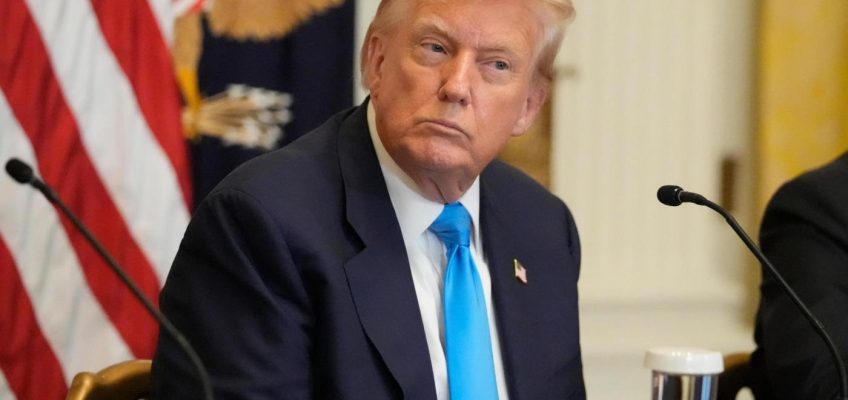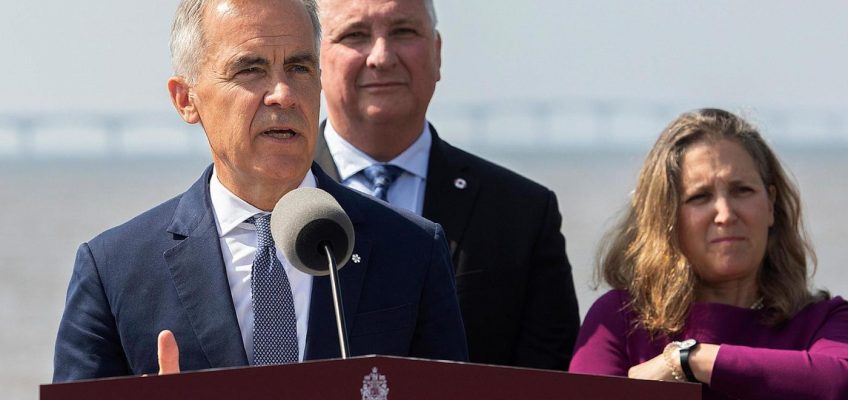By STEPHEN GROVES, Associated Press
WASHINGTON (AP) — The Senate confirmed President Donald Trump’s pick to lead the National Counterterrorism Center, Joe Kent, on Wednesday evening as Republicans looked past his connections to right-wing extremists and support for conspiracy theories about the Jan. 6, 2021, riot at the U.S. Capitol.
Kent won confirmation on a 52-44 vote tally with Sen. Thom Tillis of North Carolina the only Republican nay vote. Kent had already been working for Director of National Intelligence Tulsi Gabbard. As the head of the National Counterterrorism Center, he will oversee an agency tasked with analyzing and detecting terrorist threats.
In the role, he plans to devote agency resources to targeting Latin American gangs and other criminal groups tied to migration. He is the latest Trump loyalist to win Senate confirmation to the upper echelons of U.S. national security leadership at a time when Trump is stretching his presidential wartime powers to accomplish his goals.
“President Trump is committed to identifying these cartels and these violent gang members and making sure that we locate them and that we get them out of our country,” Kent said at his confirmation hearing before the Senate Intelligence Committee in April.
Related Articles
Biden aide denounces GOP probe into former president’s health as baseless and denies any cover-up
Brown University strikes agreement to resolve discrimination complaints and restore federal funding
US to share biometric data with Chile ‘to track criminals,’ Homeland Security’s Noem says
US wants back millions in COVID relief from local governments over missing reports
Trump signs order to justify 50% tariffs on Brazil
Kent enters the top role at the counterterrorism center after two unsuccessful campaigns for Congress in Washington state, as well as a military career that saw him deployed 11 times as a Green Beret, followed by work at the CIA. His first wife, a Navy cryptologist, was killed by a suicide bomber in 2019 while fighting the Islamic State group in Syria.
Yet Democrats strongly opposed his confirmation, pointing to his past ties to far-right figures and conspiracy theories. During his 2022 congressional campaign, Kent paid Graham Jorgensen, a member of the far-right military group the Proud Boys, for consulting work. He also worked closely with Joey Gibson, the founder of the Christian nationalist group Patriot Prayer, and attracted support from a variety of far-right figures.
During his Senate confirmation hearing, Kent also refused to distance himself from a conspiracy theory that federal agents had somehow instigated the Jan. 6, 2021, attack at the Capitol, as well as false claims that Trump won the 2020 election over President Joe Biden.
Democrats grilled him on his participation in a group chat on Signal that was used by Trump’s national security team to discuss sensitive military plans.
They also raised grave concerns over a recent incident where Kent, as Gabbard’s chief of staff, told an intelligence analyst to revise an assessment of the relationship between the Venezuelan government and a transnational gang. The revisions supported Trump’s assertions that members of the gang could be removed under the Alien Enemies Act — a wartime provision.
Democrats said it showed Kent cannot be trusted to handle some of the nation’s most important and sensitive intelligence.
Sen. Mark Warner of Virginia, the top Democrat on the Senate Intelligence Committee, said any counterterrorism director “must be trusted to tell the truth and to uphold the core principles of the intelligence community: Objectivity, nonpartisanship and fidelity to fact.”
“Unfortunately, Mr. Kent has shown time and again that he cannot meet the standard,” Warner added.
Still, Republicans have praised his counterterrorism qualifications, pointing to his military and intelligence experience.
Sen. Tom Cotton, the GOP chair of the intelligence committee, said in a floor speech that Kent “has dedicated his career to fighting terrorism and keeping Americans safe.”




